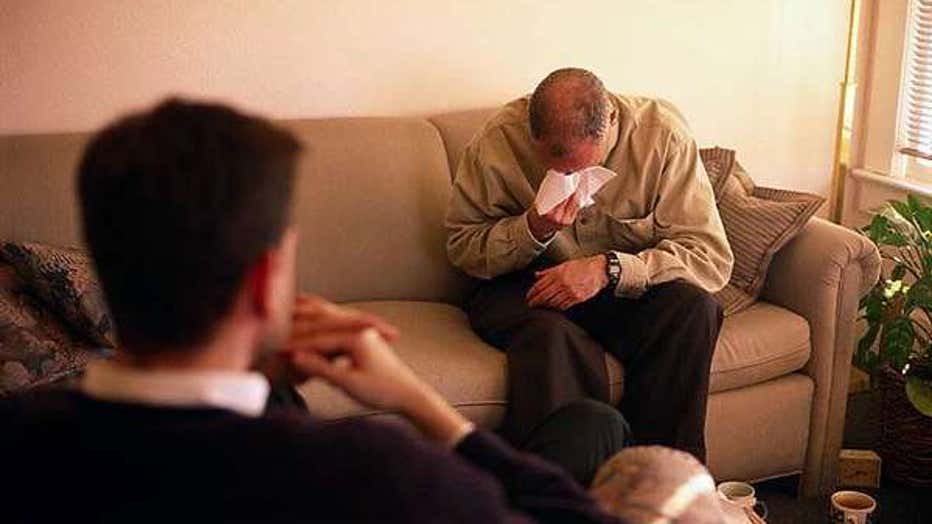Study shows men just as likely to be depressed as women

Photo courtesy of Los Angeles Times
By Melissa Healy, Los Angeles Times
Depression can look very different in men and women. And many of its hallmarks — rage, risk-taking, substance abuse and even workaholism — can hide in plain sight.
Now researchers say that when these symptoms are factored into a diagnosis, the long-standing disparity between depression rates in men and women disappears.
That conclusion overturns long-accepted statistics indicating that, over their lifetimes, women are 70% more likely to have major depression than men. In fact, when its symptoms are properly recognized in men, major depression may be even more common in men than in women, according to a study published Wednesday by the journal JAMA Psychiatry.
The findings help unravel a mystery that has long puzzled mental health authorities: If men are so much less likely than women to be depressed, why are they four times more likely to commit suicide?
"When it comes to depression in men, to some extent we have blinders on," said Dr. Andrew Leuchter, a psychiatrist who studies depression at UCLA. "We have not been asking about and taking into account a range of symptoms that may be gender-specific."
Health policy researchers from the University of Michigan and Vanderbilt University set out to test the feasibility of two new checklists that might diagnose depression in men as well as women with greater accuracy.
In addition to familiar depression symptoms such as sadness, difficulty sleeping, feelings of guilt or worthlessness and loss of interest in pleasurable activities, the researchers expanded the list to include anger attacks, aggression or irritability, substance abuse, risk-taking behavior and hyperactivity. They devised two scales — one designed to be gender-neutral and one tuned toward the way the disease manifests itself in men.
The researchers tested these diagnostic criteria in a group of nearly 5,700 American adults who had been interviewed as part of a long-term study of mental health organized by researchers at Harvard Medical School; 41% of the participants were men.
The results of the analysis were striking.
When assessed using the "gender inclusive depression scale" that included widely recognized depressive symptoms such as sadness and hopelessness as well as symptoms commonly seen in men, 30.6% of men and 33.3% of women were found to have experienced a depressive episode at some point in their lives. In research terms, that gap between men and women was so narrow it may have been a statistical fluke.
And when the subjects were evaluated with the "male symptoms scale," 26.3% of men and 21.9% of women were said to have experienced a major depressive episode in their lifetimes. That difference was large enough that it could not be due to chance, the researchers reported.
"Everything we think we know about depression is a reflection of how we defined it to begin with," Leuchter said.
That bias, he added, may have fostered the perception that depression is predominantly a "woman's disease" — and that men don't need treatment for emotional suffering.
Sigmund Freud, the father of psychiatry, portrayed depression as rage turned inward. But for many men today, depression's rage appears not so much directed at oneself as it is spat outward — at spouses, co-workers and friends.
While women may not feel shame in acknowledging their sadness and sagging self-esteem, mental health experts find that depressed men often respond to such feelings with actions that look like their opposite: They bluster and bully. They throw themselves into harm's way. They numb themselves with sex, drugs and endless workdays.
If the emotional pain of many men is to be understood for what it is, depression's definition should be expanded to include these "externalizing" symptoms — the opposite of "internalizing" symptoms that have long defined depression, some mental health professionals argue.
"These findings could lead to important changes in the way depression is conceptualized and measured," the study authors concluded.
If psychiatrists update their official diagnostic criteria to reflect these gender differences, that would be only a first step, Leuchter said.
Doctors, including primary care physicians who now diagnose most depression, would have to be educated to look for an expanded set of symptoms, he said. Researchers would not only need to understand how seemingly separate diseases such as substance abuse and depression relate to each other, they would also need to assess whether the treatments currently available — antidepressants and talk therapy — would help men with these symptoms, he said.
For men as well as women, the checklists now in wide use to diagnose depression may fail to capture the experience and language of the emotional distress they feel, said study leader Lisa Martin, a health policy studies professor at the University of Michigan.
"Word choice matters," she said.

